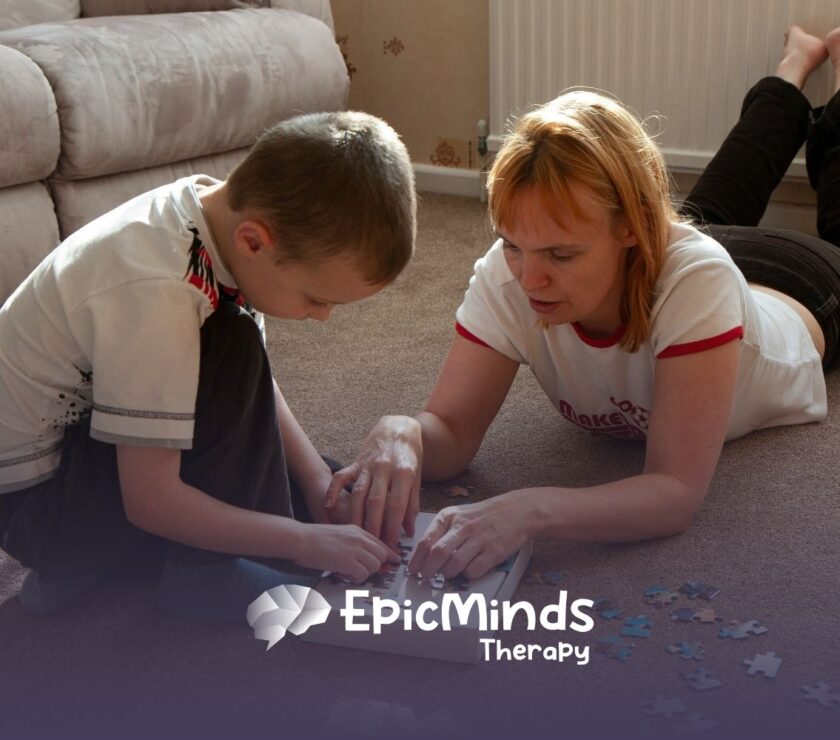Parents and caregivers often look for signs of autism in babies well before their first birthday. Spotting early indicators in social interaction, communication, or motor development is not always straightforward.
Yet early recognition can unlock access to therapies that improve learning, behavior, and overall quality of life. This article presents key developmental milestones, common red flags, and steps for families to take when concerns arise.
Understanding Autism Spectrum Disorder
What Is ASD?
Autism spectrum disorder (ASD) is a neurodevelopmental condition marked by differences in social communication and behavior. It affects how individuals process sensory information and interact with their environment. The term spectrum emphasizes that experiences range from mild to more pronounced challenges.
Prevalence and Demographics
ASD affects about 1 in 59 American children, and it is four to five times more common among boys than girls. Symptoms typically appear before a child turns two, though some families report concerns even earlier. Recognizing these patterns helps ensure that infants receive timely support.
Importance of Early Recognition
Early identification of ASD can lead to interventions that take advantage of brain plasticity in infancy and toddlerhood. Research shows that children who receive targeted therapies before age three demonstrate greater gains in communication, social skills, and adaptive behavior. For example, studies of the Early Start Denver Model have shown significant improvements in cognitive and language outcomes for children under two and a half years old.
Intervening early not only boosts developmental trajectories but also reduces the need for support services later in life. Longitudinal research indicates that early treatment may improve a child’s IQ by an average of 17 points and increase the likelihood of attending regular education classes and sustained employment in adulthood. Prompt action can shape long-term outcomes.
Tracking Developmental Milestones
Recommended Screening Schedule
Pediatricians follow a schedule of general and autism-specific screenings to monitor development:
- 9 months: general developmental screening
- 18 months: combined developmental and autism-specific screening
- 24 months: autism-specific evaluation
- 30 months: follow-up developmental screening
Developmental Milestone Chart
The table below outlines typical behaviors and possible concerns by age.
| Age | Typical Behavior | Possible Concern |
| 6 months | Responds to own name | No response to name by 9 months |
| 9 months | Uses gestures like pointing and waving | No pointing or waving, limited response to social cues |
| 12 months | Says one to three single words | No single words by 12 months |
| 18 months | Combines words, follows simple directions | No two-word phrases or loss of previously acquired skills |
| 24 months | Shows pretend play and simple games | Little or no pretend play, minimal social engagement |
| 36 months | Engages in back-and-forth play, simple sentences | Difficulty with conversation or interactive play |
Identifying Social and Communication Signs
Typical Social Behaviors
Most infants make regular eye contact and smile in response to faces. By six months they often babble and by nine to twelve months they use gestures, such as pointing or waving, to share interest. Simple social games like peek-a-boo usually elicit joyful reactions by the end of the first year.
Social Communication Red Flags
Families may observe one or more of these patterns in babies at risk for ASD:
- Limited or fleeting eye contact
- Lack of gestures such as pointing or waving
- No response to name by nine months
- Minimal babbling or loss of earlier babbling
- Little back-and-forth play or imitation of social games
Observing Motor and Sensory Signs
Motor Development Differences
Children on the autism spectrum sometimes show delays in crawling, walking, or fine motor tasks like grasping objects. Toe walking beyond toddlerhood and difficulty using utensils may also appear. Around 25 percent of children later diagnosed with ASD experience a regression in motor and social skills between 15 and 24 months.
Sensory Behavior Concerns
Some infants overreact to ordinary sounds, avoid certain textures, or demonstrate unusually high pain thresholds. Others may seek intense sensory input by staring at lights or fixating on spinning objects. Early sensory patterns can offer important clues for clinicians.
Seeking Professional Help
When caregivers notice persistent concerns or multiple red flags, they should discuss observations with a pediatrician. Professionals often use the Modified Checklist for Autism in Toddlers, Revised with Follow-up (M-CHAT–R/F) to screen for ASD risk. If the screening suggests risk, referrals to developmental pediatricians, child psychologists, or neurologists may follow.
Families can also contact early intervention services under Part C of the Individuals with Disabilities Education Improvement Act (IDEA). Each state provides programs for children from birth to age two. Early contact ensures access to assessments and tailored support without delay.
Exploring Intervention Options
Evidence-Based Therapies
Applied Behavior Analysis (ABA) is one of the most studied approaches, focusing on teaching skills and reducing challenging behavior. The Early Start Denver Model blends ABA with developmental science to support children under age three. Speech and occupational therapy address communication and daily living skills. These methods have documented benefits in language, social interaction, and adaptive behavior.
Family-Led Strategies
Parents can integrate play-based interventions at home using simple routines to encourage turn-taking and joint attention. Visual supports, clear cues, and consistent responses reinforce learning. Training programs teach techniques such as modeling gestures and narrating daily activities. Active family involvement strengthens therapy gains.
Supporting Families and Caregivers
Accessing Community Services
Local early intervention agencies, pediatric clinics, and school-based programs in North Carolina provide evaluations and ongoing services. The North Carolina Department of Health and Human Services lists county coordinators for Part C early intervention. Nonprofit organizations often offer parent training, respite care, and financial assistance.
Building a Support Network
Connecting with other families through support groups or online communities can ease stress and share practical strategies. Workshops, peer mentoring, and local seminars hosted by therapists and educators provide learning and encouragement. A strong support network bolsters family well-being and confidence.
Conclusion
Recognizing early indicators involves careful tracking of social, communication, motor, and sensory milestones. Parents who notice persistent red flags should document behaviors and discuss them with a pediatrician. Timely screenings and referrals can set the stage for effective early intervention therapies.
Families are encouraged to advocate for services, engage in recommended treatments, and seek community supports. Partnering with professionals and peers offers the best path toward positive outcomes for infants on the autism spectrum.
At Epic Minds Therapy, we specialize in early intervention for children in North Carolina showing signs of autism. Our team works closely with families to track developmental milestones, provide timely screenings, and offer effective ABA therapy to ensure the best outcomes.
Contact us today to discuss early indicators of autism and learn how we can support your child with personalized, evidence-based interventions that set the foundation for success.
Frequently Asked Questions
What are the early signs of autism in children?
Early signs can include delayed speech, difficulty with eye contact, repetitive behaviors, and challenges with social interactions. Monitoring milestones in communication, motor skills, and sensory responses is crucial for early identification.
How can I get my child screened for autism?
If you notice red flags, it’s essential to consult with a pediatrician for an initial screening. From there, they can provide a referral for further assessment by a developmental specialist or behavior analyst.
What is the role of early intervention in autism?
Early intervention helps children with autism develop vital skills in communication, social interaction, and motor coordination. The earlier the intervention, the better the chance for significant improvement in key developmental areas.
SOURCES:
https://www.healthline.com/health/autism/signs-of-autism-in-babies
https://www.nhs.uk/conditions/autism/signs/children
https://www.nichd.nih.gov/health/topics/autism/conditioninfo/treatments/early-intervention
Signs of autism in babies
https://www.cdc.gov/autism/signs-symptoms/index.html




